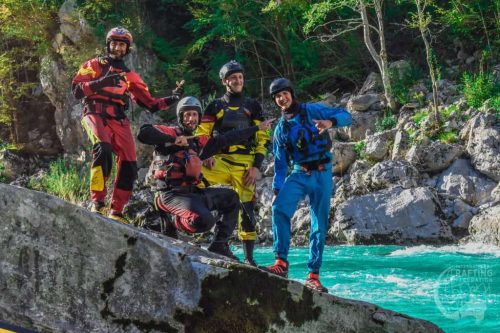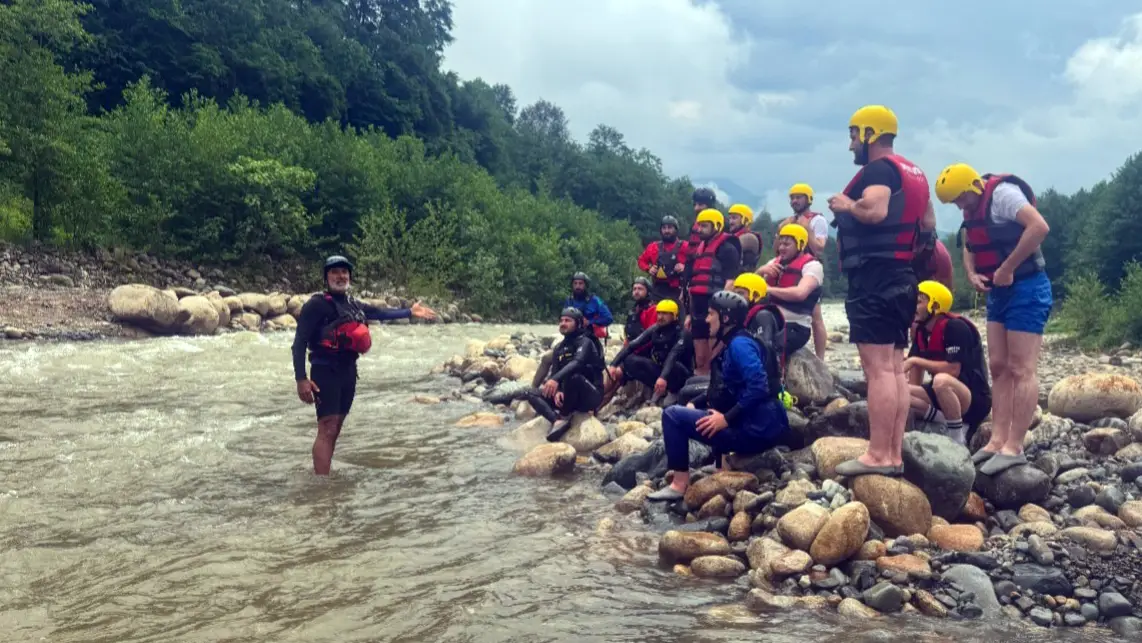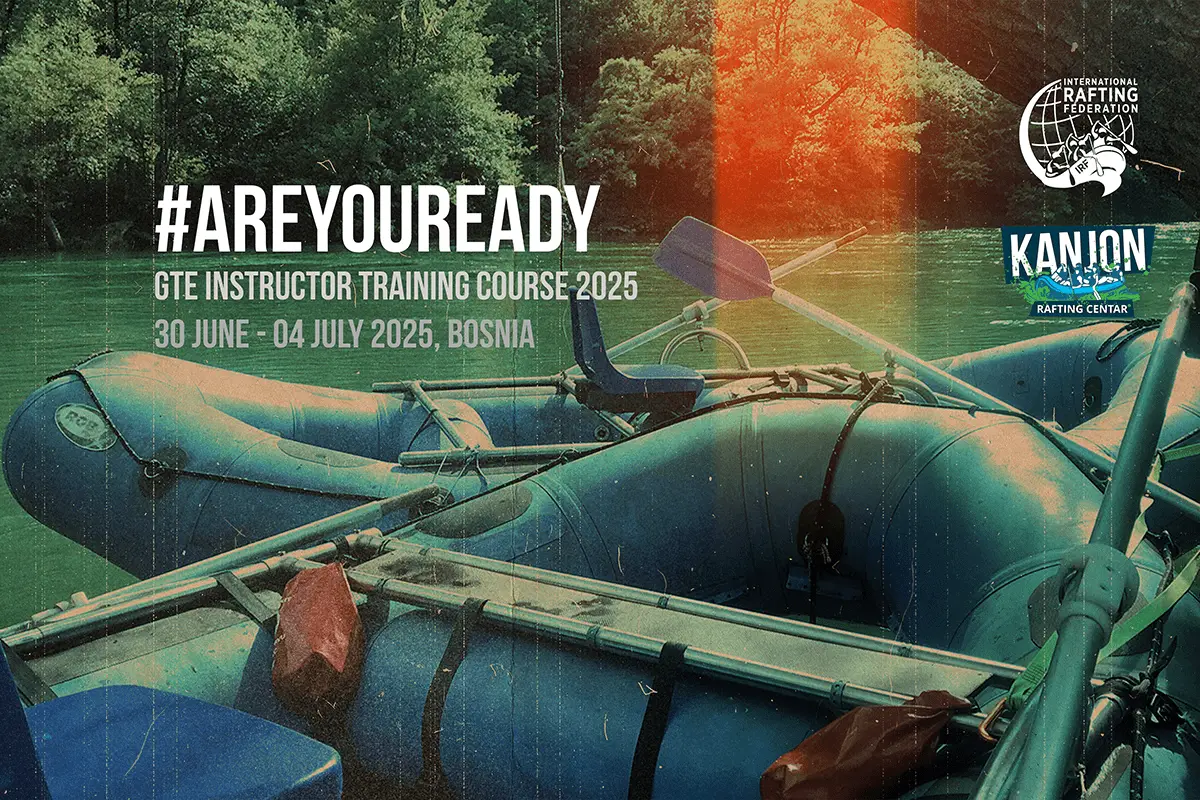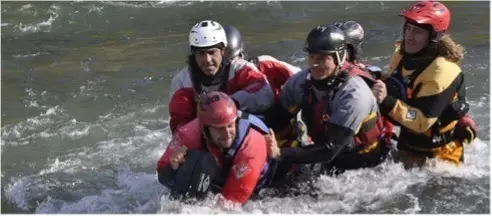With the IRF GTE starting to come to life again after all the various Covid-19 related issues, we ran guide workshops on the Soca, Slovenia. And workshops have been happening in Canada, Chile, Spain, Switzerland, Slovenia, UK and USA during September and October 2020.
 Having spent a few months guiding in Iceland I noticed that the European domestic rafting companies were eventually having a busy season. I was hearing from friends based all around Europe who were working as raft guides that they were having record numbers of rafting customers compared to previous seasons.
Having spent a few months guiding in Iceland I noticed that the European domestic rafting companies were eventually having a busy season. I was hearing from friends based all around Europe who were working as raft guides that they were having record numbers of rafting customers compared to previous seasons.
Future IRF instructor, Miha Mihelic, and I had been planning a GTE workshop on the Soca River in Bovec Slovenia for a few months. Fellow IRF Instructor Sebastian Larcher and Provisional Instructor Mauricio Fernandez were added to the list of course instructors. This was going to be a well-staffed workshop.
The weather gods had been kind to us providing us with ample amounts of liquid sunshine (rain). The main commercial rafting section and slalom site were running at circa 50- 60 cumecs which raised the eyebrows of a few of the course students.
In total we had eight students for the Guide workshops on the Soca. We were going to run the following assessments over 3 days:
- 8 x Guide assessments
- 5 x Trip Leader assessments
- 2 x Safety Kayak assessments
 Both Sebastian and I have been running IRF workshops around the world for over five years. It was great to work with an Instructor that I have never worked with before. We both agreed that even though we only had eight students in total our time management skills needed to be kept on point. Especially because we had the ever enthusiastic Provisional Instructor, Mauricio, observing us.
Both Sebastian and I have been running IRF workshops around the world for over five years. It was great to work with an Instructor that I have never worked with before. We both agreed that even though we only had eight students in total our time management skills needed to be kept on point. Especially because we had the ever enthusiastic Provisional Instructor, Mauricio, observing us.
Day 1 of any workshop is always going to be a long day as the framework for the workshop needs to be laid down. After the initial introductions session we headed to the river in the pouring rain.
The PPE and signals session was completed before we broke off into three groups for the first safety talks. With our waterproof note books at hand Sebastian and I started to take notes to feed into the student de-brief forms.
The general feedback from all of the Safety Talks throughout the entire workshop was:
- Keep the verbal instructions to a minimum and give more visual and practical demonstrations.
- Think about the order of the micro topics within the Safety Talk.
- Think about the environment and position of your customers to maximise the learning during a Safety Talk.
We spent the reminder of the day observing a high level of guiding skills on Class 3 & 4 whitewater. Arriving back at the Prijon Sports Centre well after dark in the wet rain we decided to call it a day after two runs of the commercial rafting and slalom sections of the river.
 Day 2 gave us perfect conditions with a bluebird sky and 50 Cumecs of the famous Soca pristine blue water. Our goal today was to run the following parts of the assessment. Today was going to be a wet day:
Day 2 gave us perfect conditions with a bluebird sky and 50 Cumecs of the famous Soca pristine blue water. Our goal today was to run the following parts of the assessment. Today was going to be a wet day:
- Swim test
- Flip drill
- Throwbag test
- Mechanical advantage rope work test.
We also observed more Safety Talks and personal rafting skills from the day before. Mauricio ran the assessments which allowed myself and Sebastian to observe the sessions.
The Flip sessions were passed with ease. We set a challenging swim which involved swimming a set line down a rapid which included eddying out river right and river left. The students needed to swim two laps of the course once with a paddle and then again without a paddle. Not only did we want to test the swimming skills of the students we wanted to test their fitness too.
Straight after the swim test we moved a few hundred meters downstream into the throw bag test, which was set in a challenging environment. After a few warm up throws the students all managed to pass the standard IRF throw bag test which involves making 2 throw bag rescues inside 90 seconds with the same rope. Belay and rope management skills were also assessed.
 In the evening back at the base all of the students demonstrated their rope work skills by building either a 3:1 or 4:1 mechanical rope system. During this session not only did the students receive feedback on the way the system was constructed they also were given feedback on effectiveness of their personal rescue equipment (PRE).
In the evening back at the base all of the students demonstrated their rope work skills by building either a 3:1 or 4:1 mechanical rope system. During this session not only did the students receive feedback on the way the system was constructed they also were given feedback on effectiveness of their personal rescue equipment (PRE).
Day 3 was trip leader (TL) assessment day. We had a busy day ahead as we needed to set 5 trip leader scenarios. In the morning the students were briefed on the assessment standards of the TL awards. We then headed out to the river. Sebastian, Mauricio and I took turns in setting up and assessing the scenarios.
The students started to notice a pattern was emerging when dealing with a scenario:
- Communicate with your own crew that something is happening.
- Communicate with your fellow guide team that something is happening.
- Get a head count ASAP and try to set a downstream safety net.
- Make a plan and prioritise your rescue.
- Delegate and communicate your plan.
- Make the rescue.
- Get everyone and all equipment back together.
- Make sure all are ok before continuing down stream.
 As the students had been working together for 2 days the teamwork bond was now starting to form which made the scenarios easier on the students.
As the students had been working together for 2 days the teamwork bond was now starting to form which made the scenarios easier on the students.
Once again we arrived back to the base after nightfall after an interesting day on the river. As the students decided to fire up the BBQ with a few beers, Sebastian, Mauricio and I started to compile the student’s results and de-briefs for the next morning.
Once the workshop was completed the feedback from the students was encouraging. The students all commented on the following points:
- Learning took place.
- Personal skills and communication skills were tested to the max.
- Fun was had, friendships were made.
 2021 has the potential to be a big year for the IRF GTE (fingers crossed). The 2021 conference will be held in France with a number of workshops already confirmed.
2021 has the potential to be a big year for the IRF GTE (fingers crossed). The 2021 conference will be held in France with a number of workshops already confirmed.
Many thanks to Miha Mihelic and Prijon Sports Centre, and an extra special thanks to Jasmine Zulini for the amazing pictures.
Happy rafting.
(Original article on Lapin Koskikoulu)




